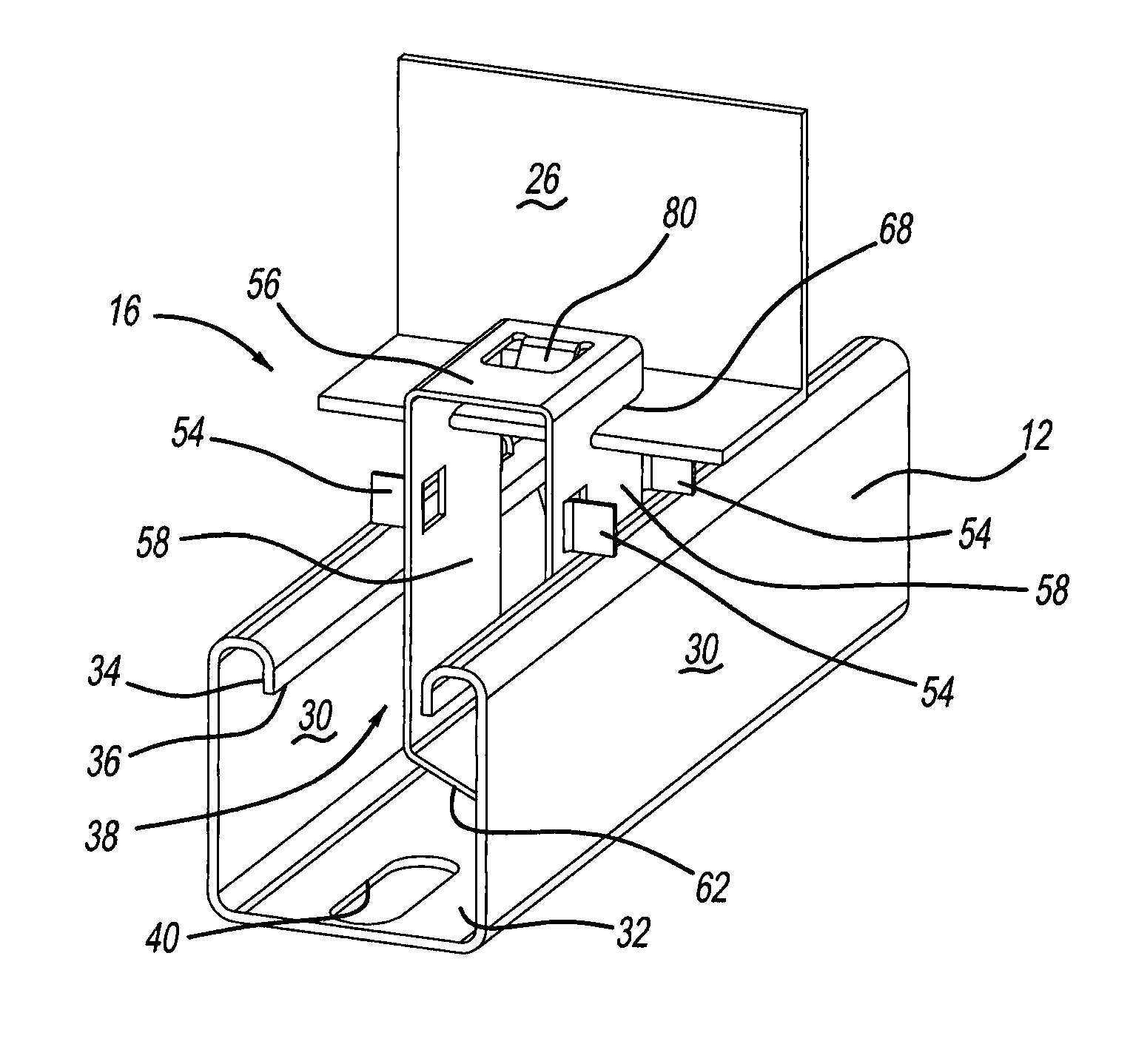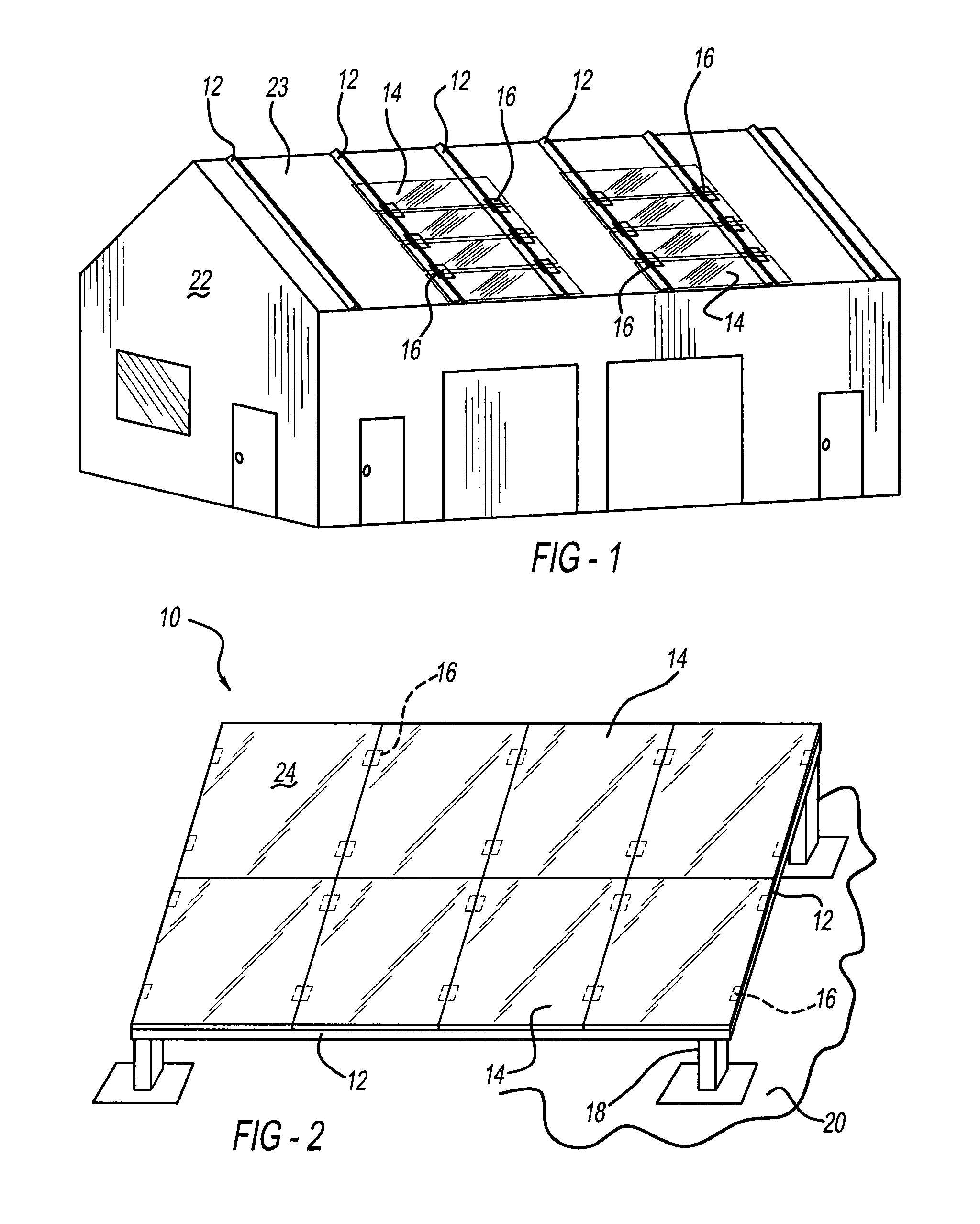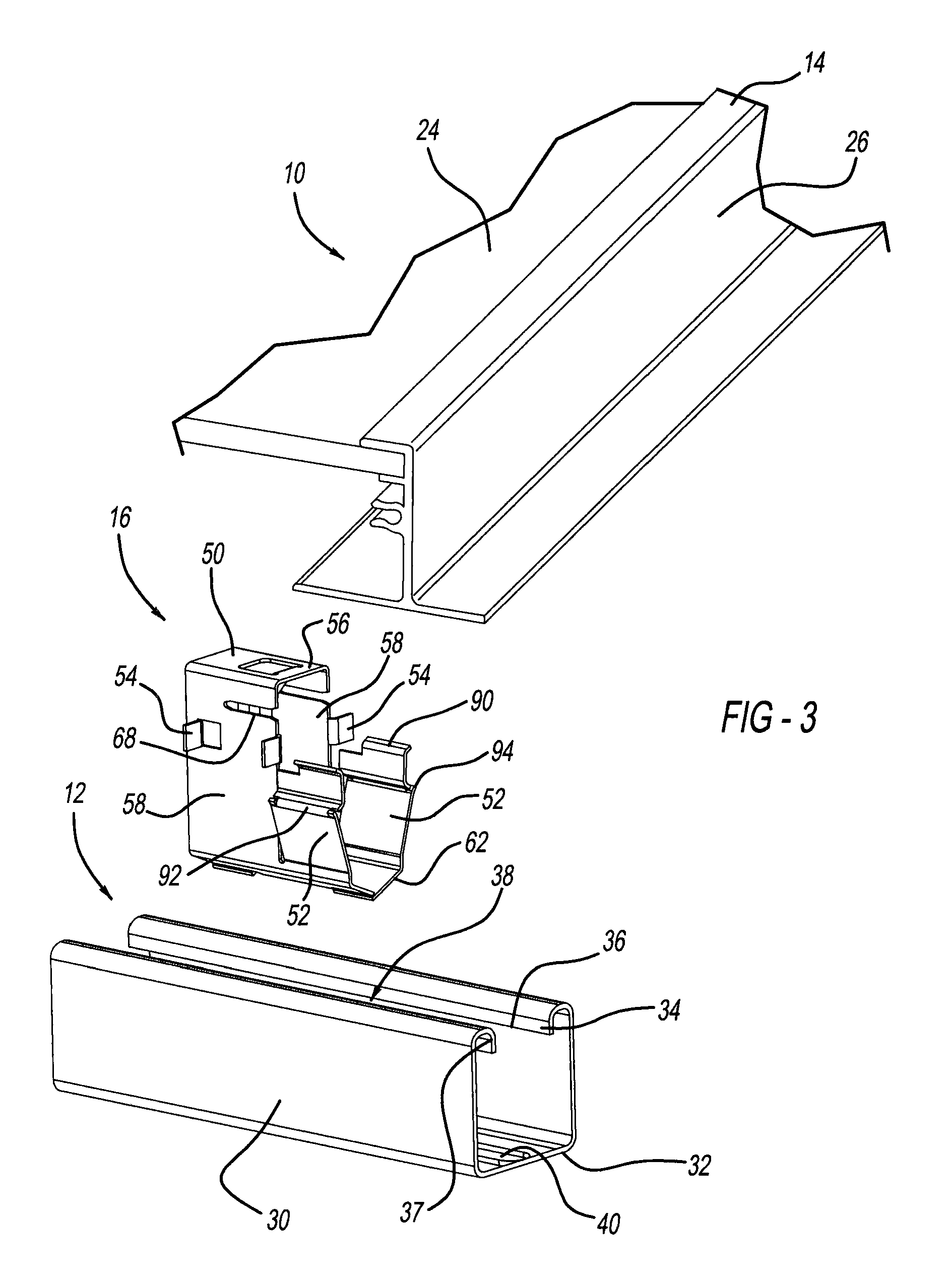Photovoltaic frame fastener
a technology of photovoltaic frame and fastener, which is applied in the direction of rod connection, heat collector mounting/support, lighting and heating apparatus, etc., can solve the problems of affecting the quality of photovoltaic frame, so as to reduce assembly costs, manufacture and install fast, and improve quality
- Summary
- Abstract
- Description
- Claims
- Application Information
AI Technical Summary
Benefits of technology
Problems solved by technology
Method used
Image
Examples
first embodiment
[0036]Referring to FIGS. 1-3, a photovoltaic frame fastener assembly 10 includes elongated and rigid rails or struts 12, solar or photovoltaic panel modules 14, and fasteners 16. Struts 12 are mounted to vertical legs 18 attached to land or ground 20 in one configuration. In another configuration, struts 12 are bolted onto a roof clamp or other structure on a roof or side of a building 22. Each photovoltaic module 14 includes a chemically coated glass photovoltaic panel 24 and an adhesively attached, peripheral metallic frame 26. Glass photovoltaic panel 24 and metallic frame 26 are provided as a pre-assembled unit or may be provided as separate units to the installation site.
[0037]As best shown in FIGS. 3-5 and 8, strut 12 has a uniform and generally U-shaped cross-section as defined by upstanding sidewalls 30 joined by a bottom wall 32. A reverse-turned wall 34 extends from a top end of each sidewall 30 and terminates in a downwardly directed edge 36. Downwardly directed edge 36 p...
third embodiment
[0052]Referring now to FIGS. 26-29, a lower removal tool 250 is used to remove a snap-in photovoltaic frame grounding clip 252. Grounding clip 252 includes a pair of spaced apart clamps 254 and 256, an upper bridge 258 and a mounting section 260. Each clamp has a generally C-shape, thereby creating an openly accessible receptacle therebetween. Furthermore, a lead-in wall 262 upwardly and outwardly angles away from each clamp to ease insertion of a flat lateral flange segment of frame 26 therein during assembly. If used for grounding, a pair of pointed barbs 264 internally project from each upper section of clamps 254 and 256. Each barb 264 cuts into and gouges the adjacent surface of frame 26 to scrape off the anodized coating thereat. This provides multiple satisfactory electrical grounding paths between the base material of the frame and the clip. This can be achieved by the simple linear insertion of the clamps of the clip onto the flange of the frame without the need for rotatio...
PUM
 Login to View More
Login to View More Abstract
Description
Claims
Application Information
 Login to View More
Login to View More - R&D
- Intellectual Property
- Life Sciences
- Materials
- Tech Scout
- Unparalleled Data Quality
- Higher Quality Content
- 60% Fewer Hallucinations
Browse by: Latest US Patents, China's latest patents, Technical Efficacy Thesaurus, Application Domain, Technology Topic, Popular Technical Reports.
© 2025 PatSnap. All rights reserved.Legal|Privacy policy|Modern Slavery Act Transparency Statement|Sitemap|About US| Contact US: help@patsnap.com



